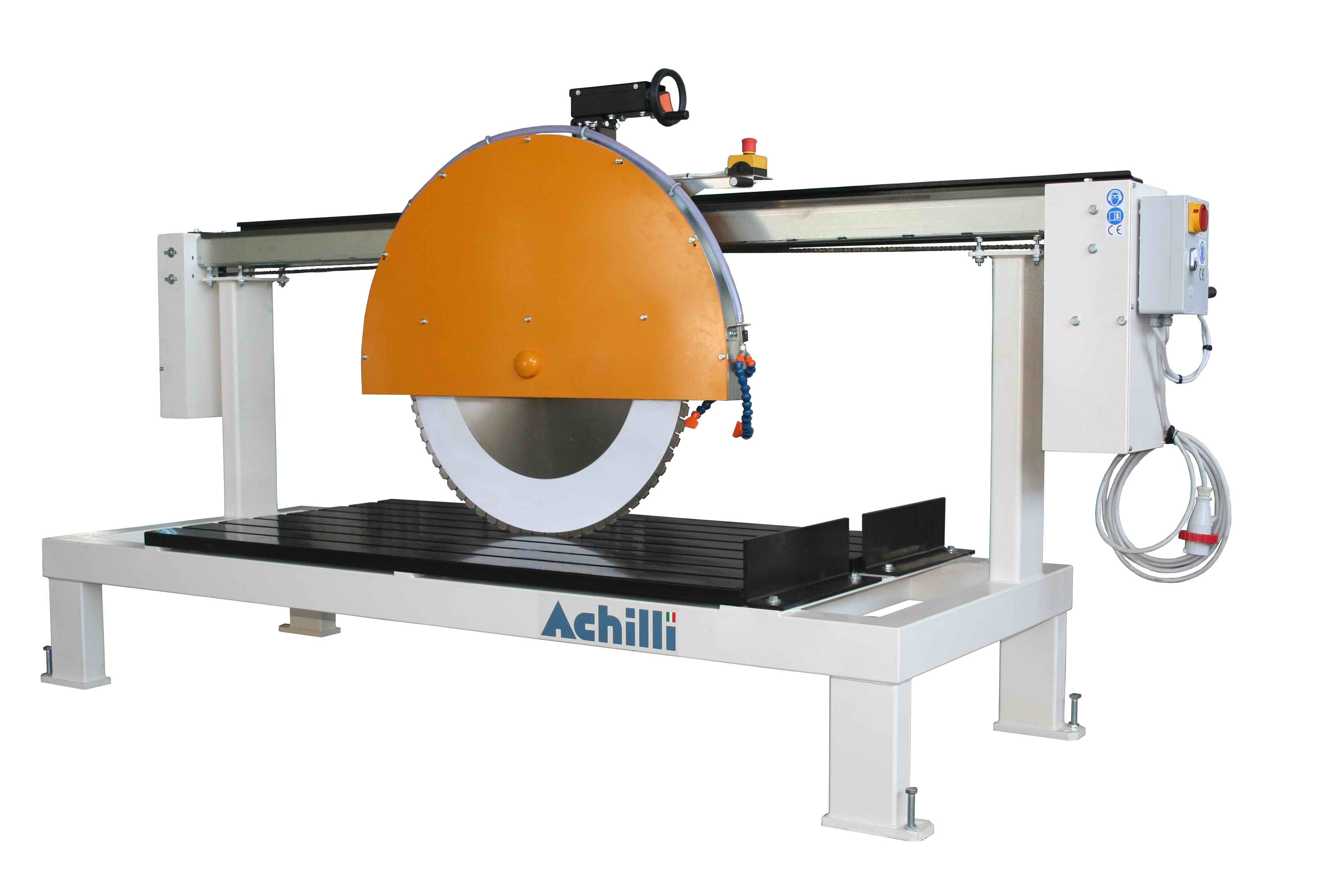Cutting stone and ceramic slabs: how to do it best

Marble, ceramic, stoneware, and granite are precious and essential materials in the production of various products used in different sectors. These materials require specific processing to be used and transformed into finished products.
Therefore, cutting slabs of these materials is not an easy task. The correct cutting of slabs is vital to ensure the quality of the final product. Slab cutting is essential in the production of several products, such as floors, walls, stairs, and kitchen or bathroom worktops.
To make the right cut for each type of material it's crucial to choose the correct cutting method and know which type of saw to use, along with its characteristics.
Different thicknesses and dimensions of the semi-finished products require the use of different types of saws, depending on the cut to be made.
So, how can we best cut slabs? What are the key factors to consider when choosing the best saw?
We have compiled a list of important points to consider when choosing the right sawing machine for cutting slabs.
Material type
Each material has unique characteristics and can react differently to cutting. Therefore, it's essential to analyze the material's characteristics to choose the right sawing machine with the most suitable features. The type of material impacts the choice of the diamond blade, its diameter, and composition. Additionally, the setting of the machine itself also depends on the type of material, from the number of revolutions of the disc to the cutting speed. Choosing a machine with a suitable ratio between the diameter of the disc and the engine's revolutions is crucial when cutting stones. If you work with slabs made of different materials, it's recommended to choose a saw model with an inverter that allows adjusting the disc's speed to match the material being cut.
Type of cut
The 45° inclined cut is essential to glue two slabs together and create 90° angles on finished products such as stairs or furniture tops. This type of cut requires a saw with greater functionality and sturdiness than a machine for straight 90° cuts. It's necessary to evaluate whether the 45° cut can be completed in a single pass or through several passes. If thick materials require step cutting, it's essential to choose a machine with an adjustable vertical movement in the 45° cut mode.
On the Achilli fixed bridge machines, for example, it is possible to obtain a 45° slab cut by tilting the beam; this allows the vertical axis to be adjusted even with the head tilted.
It is therefore essential to choose the ideal machine for the type or types of cuts to be made.
Disc overheating and water use
Overheating of the saw blade during operation is a common problem when cutting hard materials. Saws have an integrated water recirculation pump that sprays water onto the diamond blade to prevent overheating, such as the AFR-A model. In this type of saw, the pump sprays water onto the diamond blade at the exact point where the diamond comes into contact with the material to prevent overheating, thus speeding up the process and improving the precision of the cut. In all Achilli models it is possible to adjust the point where the water is sprayed onto the slab according to the diameter of the disc used.
This speeds up the process, improves the precision of the cut, and eliminates dust created during cutting.
Length and thickness of the slab
Not only the material, but also other characteristics of the slab to be cut are essential for understanding which saw to choose. The length of the slab is an essential aspect that directly affects the choice of the machine. The various sawing machine models have different limits regarding the maximum workable length. The thickness of the slab and the hardness of the material are also essential information for selecting the correct machinery to use.
Design and robustness of the saw beam
The saw beam is the most critical component of a sawing machine. It needs to be sturdy and well-designed to handle the hardest test when cutting thick and hard slabs.
This is because the shape and strength of the beam guarantee the sawing machine maximum cutting precision, resistance to bending and durability over time. A beam that is not very strong or of poor quality could in fact considerably reduce the precision of the cut or even damage the pieces to be cut.
It is therefore essential that the beam is specifically designed to withstand certain types of cut and specific materials, to ensure the perfect outcome of the operation and obtain the necessary precision.
These are the most important points to always keep in mind in order to choose the most suitable sawing machine for your workshop.
If you are looking for the ideal saw for you, discover the range of Achilli machines and contact us:
Manual Stone Cutting Machine AFR-C




